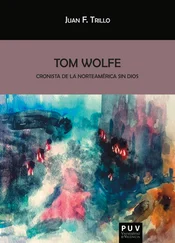“Can I meet you somewhere—then? Please?”
With such a begrudging reluctance it didn’t even sound like a question: “Where.”
“How about out front of Mr. Rayon?”
By the time she nodded a down-in-the-mouth yes, she was already on the move around him.
The huge athlete looked whipped, the way his eyes tracked her as she went. It gave her an odd sensation, having the upper hand with this enormous sports star and campus celebrity. As she turned away, there rising above them both, Jules Dalou’s statue of Saint Christopher carrying the infant Jesus across a stream. The great French sculptor had rendered the figures so dramatically that Charlotte had the sensation that they were actually moving. It stirred her. She was capable of experiencing art, not just looking at it. The rest of the world, or most of it, was like Jojo; which is to say, cut off from the life of the mind.
The lights were down, and on the amphitheater’s stage an eight-foot-high slide screen gleamed with a photographic portrait of a swarthy white man with a grand mustache and a trimmed beard that swooped down from his temples along a pair of strong jawlines to the thick but carefully coifed beard on his chin. The widow’s peak of his hairline was by now, in his middle years, well out in front of the rest of the stand of hair on his pate, but the avant-garde strands on the peak had been combed back with such blow-dry bravura that the overall effect was of a unified flowing mane. He looked rather like one of the Three Musketeers, except that at the bottom of the picture you got a glimpse of the knot of a necktie and the collar of a white smock.
Mr. Starling was saying, “Delgado was one of those scientists who faced death—or so it seemed to other people—by using themselves as guinea pigs to test their own discoveries.”
The lectern was off to one side of the stage so that everyone in the class could see the screen. A beam of light from above illuminated Mr. Starling’s slim figure and his heathery blue-green tweed jacket ever so romantically, in Charlotte’s eyes. She found it easy to imagine Victor Ransome Starling as one of those death-defying heroes of discovery, even though she knew that aside from cat scratches, he had been in no danger during the experiment for which he had won science’s highest award.
“I’m not mentioning this so you’ll admire their courage,” he was saying. “In fact, it’s quite the—well, not the opposite, but the obverse, I suppose is the word. Friends and colleagues were terrified for them, but here we have two men, Walter Reed and José Delgado, and one woman, Madame Curie, who had such faith in the empirical validity of their physical knowledge and their own powers of logic—such faith in rationalism, which was barely two centuries old, to touch upon that theme again—they had no more fear than the conjurer who swallows fire, although even if you take that into account, I think you may be impressed by how Delgado proved his point.”
Now the picture on the screen was a long shot of a bullfighting ring. There were no more than a couple dozen people in the stands. On one side of the picture, in the ring, was a charging bull. On the other side was a man in a white smock standing stock-still and holding a small black object in his hands at waist level. Other than Mr. Starling’s voice, there was not a sound in the amphitheater. Charlotte was completely absorbed in Mr. Starling and the slide screen. There was no periphery, not in this hall, not in this world. Hoyt and his hand and Adam and his anxious lips and Jojo and his hangdog face no longer existed. The El Dorado that Charlotte Simmons had come to Dupont to find was at last the entire known world.
“That’s José Delgado,” said Mr. Starling, “and that’s a two-thousand-pound Andalusian bull…and those…
sticks…you see sticking out of his shoulders are the picas the picadors—you know picador?—have stabbed him with to make him angry.”
“Oh—my—God!” It was an indignant yelp from a girl somewhere below. Charlotte had no trouble interpreting it. Animal rights was one of the issues some people on campus really got heated over. “That—is—horrible! It’s—so—wrong!”
From the lectern Mr. Starling said sharply, “That’s your reaction to a culture different from your own? I’m sure I mentioned that José Delgado was Spanish, and in case I didn’t mention it, that’s a bullring in Madrid. Spanish culture is far older than ours, by a factor of millennia. You are perfectly free to object to it. You are free to object to all cultures different from your own. Would you favor us with a list of alien cultures you find most objectionable?”
Laughter spread slowly through the amphitheater. Clever parry, Mr. Starling. Denigration of another culture, especially one whose people are less well off than your own, and referring to anything as evil, which would indicate you might very well have religious convictions, were more socially unacceptable at Dupont than cruelty to animals.
Mr. Starling returned to his discourse. “Now. What is about to happen in this picture is actually not as important as what leads up to it.” He gestured toward the screen. “This photograph was taken in 1955. In 1955 Delgado was known not as a neuroscientist but as a brain physiologist.” He moved out from behind the lectern. “Can anyone tell me what the status of brain physiology, the physical study of the brain, was at that time?”
No takers. Charlotte silently berated herself. If she had studied harder—had gone to the sources, as Mr. Starling had advised—had been the student she was supposed to be—she would be able to star at this very moment. Mr. Starling was still surveying the class…
Finally he gave up and said, “It barely existed at that time, brain physiology. It had been rendered irrelevant medically by Freudianism. If psychoanalysis was the ultimate cure for dysfunctional mental capabilities and behaviors, why waste time on the taxidermy of the matter? That was the idea. Freud stopped the study of the brain cold for half a century, especially in this country, which by the 1930s had become the very headquarters, so to speak, of the Freudian method. Delgado was a rare creature. His contention was that you couldn’t understand human behavior without understanding how the brain worked. Today that seems obvious. It seems axiomatic. But it didn’t then. Delgado had found a way of mapping the brain—which is to say, determining which areas of the brain controlled what behavior—by using stereotaxic needle implants and stimulating them electronically.”
A loud gasp, probably from the girl who had yelped when Mr. Starling mentioned the picadors’ handiwork. But she said nothing, and this time Mr. Starling ignored her.
He gestured toward the screen again. “In this case Delgado has implanted an electrode in the bull’s caudate nucleus, which is just under the amygdala. As you can see, the bull was charging full tilt. When it came close enough to make it interesting, Delgado pressed a button on the little radio transmitter in his hand, and the bull’s aggressiveness vanished”—he snapped his fingers—“like that. The sheer momentum brought the bull all the way to Delgado. You have to imagine a ton of beef with horns coming at you.”
Another slide, a close-up. “The bull appears to be a foot or so on the other side of Delgado. The animal’s legs are bent in the attitude of a lazy canter. But you’ll note that the anger has vanished. The bull’s head is up, and it appears to be loping. This picture doesn’t show it, but in fact the bull actually altered its course to keep from hitting Delgado.”
Mr. Starling seemed to be enjoying himself, perhaps because he knew he had them all, even the animal rights girl. “Now, what was the lesson of this experiment? The instantaneous lesson was that an emotion as powerful as a raging urge to kill can be turned off”—he snapped his fingers again—“by stimulating a particular area of the brain. The more profound lesson was that not only emotions but also purpose and intentions are physical matters. They can be turned on and off physically. Delgado could have turned a perfectly peaceful, bashful bull—there used to be a children’s book called The Bashful Bull—or a cow, for that matter—he could have turned either one into a raging killer by stimulating the amygdala itself. As I’ve mentioned, Delgado was a physician as well as an experimental neuroscientist, and he hoped to find a way to improve people’s health and behavior through ‘physical control of the mind.’ That was the title of the one book he ever wrote—although he must have written a hundred scientific monographs recording his various experiments—that was the title of his book, Physical Control of the Mind. The philosophical implications were enormous, and he recognized that right away. His position was that the human mind, as we conceive it—and I think all of us do—bears very little resemblance to reality. We think of the mind—we can’t help but think of the mind—as something from a command center in the brain, which we call the ‘self,’ and that this self has free will. Delgado called that a ‘useful illusion.’ He said there was a whole series of neural circuits—most of which the human animal isn’t aware of—that work in parallel to create the illusion of a self—‘me,’ an ‘individual’ with free will and a soul. He called the self nothing more than a ‘transient composite of materials from the environment.’ It’s not a command center but a village marketplace, an arcade, or a lobby, like a hotel lobby, and other people and their ideas and their mental atmosphere and the Zeitgeist—the spirit of the age, to use Hegel’s term from two hundred years ago—can come walking right on in, and you can’t lock the doors, because they become you, because they are you. After Delgado, neuroscientists began to put the words self and mind and, of course, soul in quotation marks. Delgado’s conception of the self as a product of a physical mechanism has begun to turn philosophy and psychology upside down. It’s occurring right now, in our time. The most influential theories of the self throughout most of the last century were external theories. Marxism was a philosophical theory that said that you, your self, were the product of the competing forces in the class struggle between the proletariat—or the working class, including the lumpenproletariat, the term for what we now call the ‘underclass’—and the bourgeoisie and the aristocracy. Freudianism was a psychological theory that said each of us is the product of the oedipal conflict within our families. In both theories we are the product of external forces—social class, in one case, the family you’re born into, in the other. Marxists prided themselves on being materialists—realists who faced facts and didn’t fall for the usual idealism peddled by the philosophers. But the Marxist notion of materialism is sheer whimsy compared to that of the neuroscientists. Neuroscience says to us, ‘You want materialism? We’ll show you the real thing, the material of your own brains and central nervous systems, the autonomous circuits that operate outside of what you conceive of as “consciousness,” the behavioral responses you couldn’t change even if you trained for a lifetime, the illusions you will never—’”
Читать дальше










